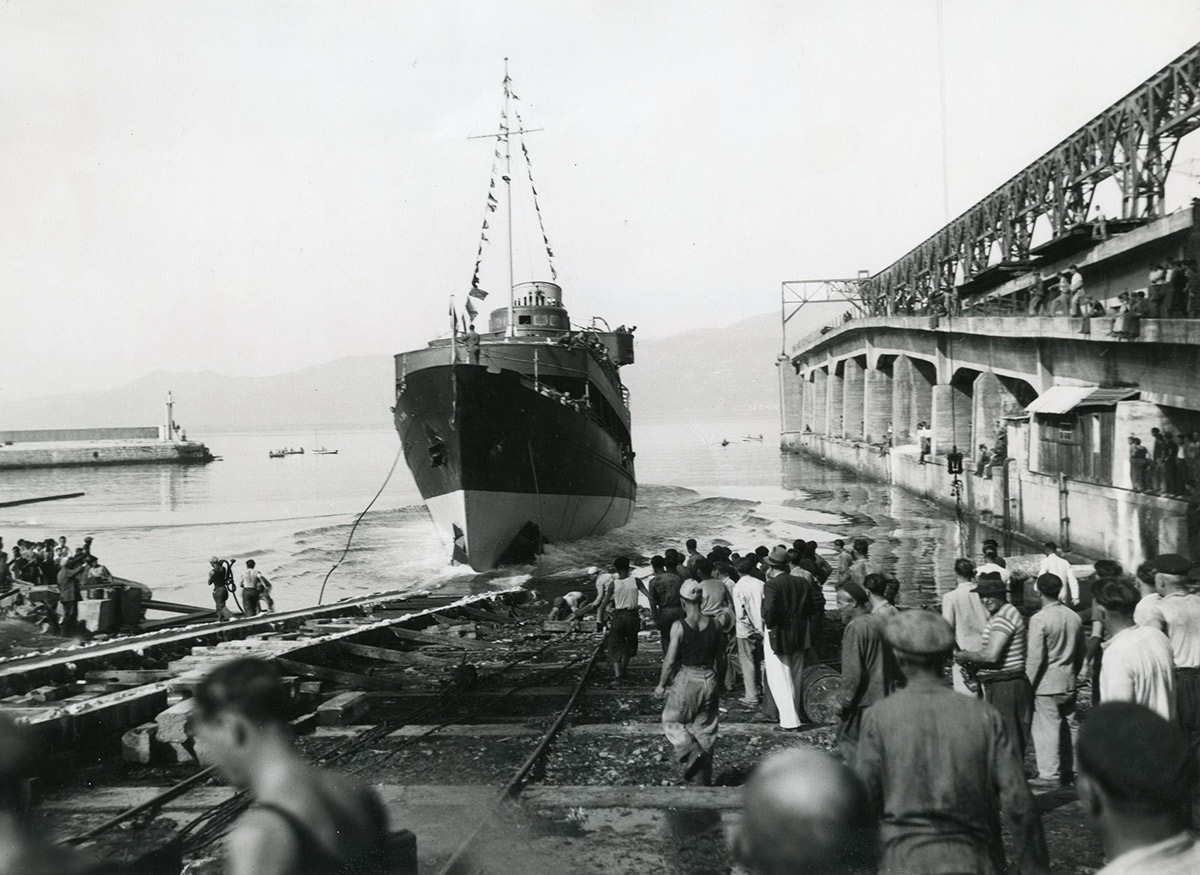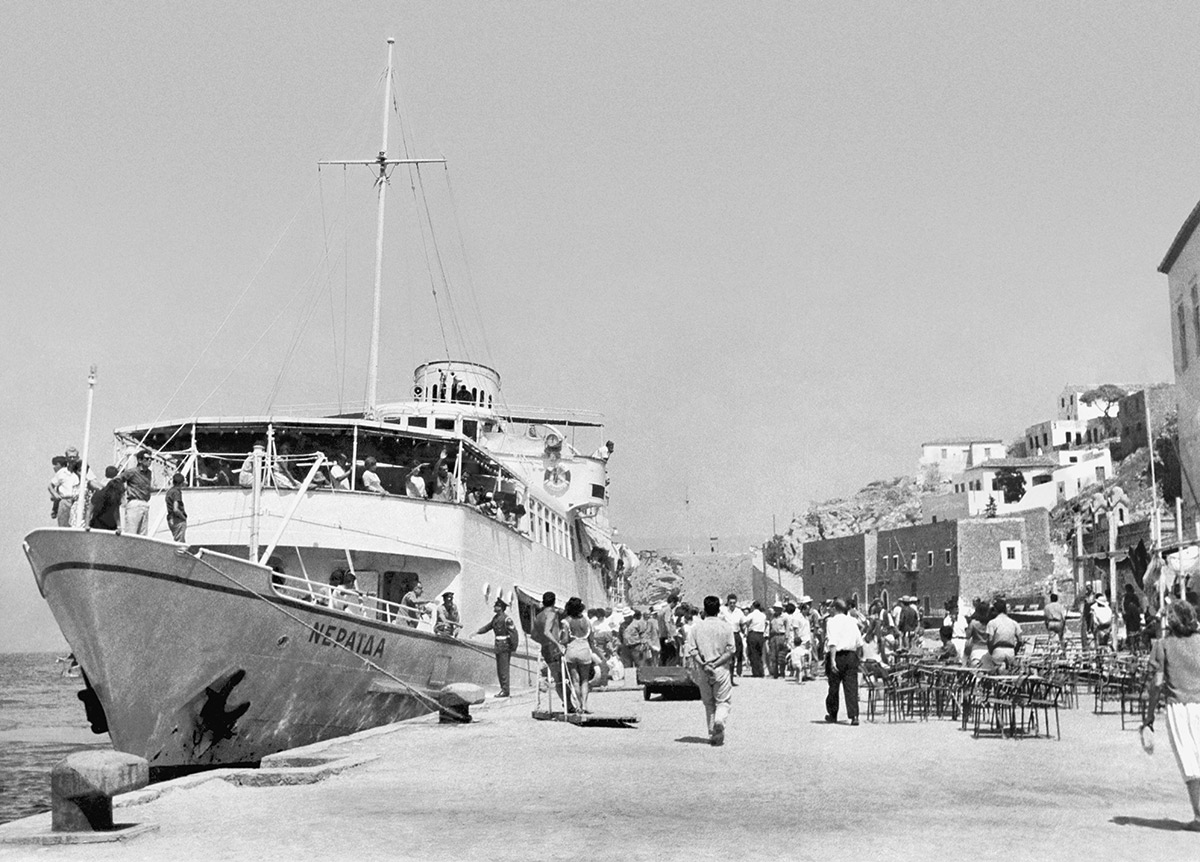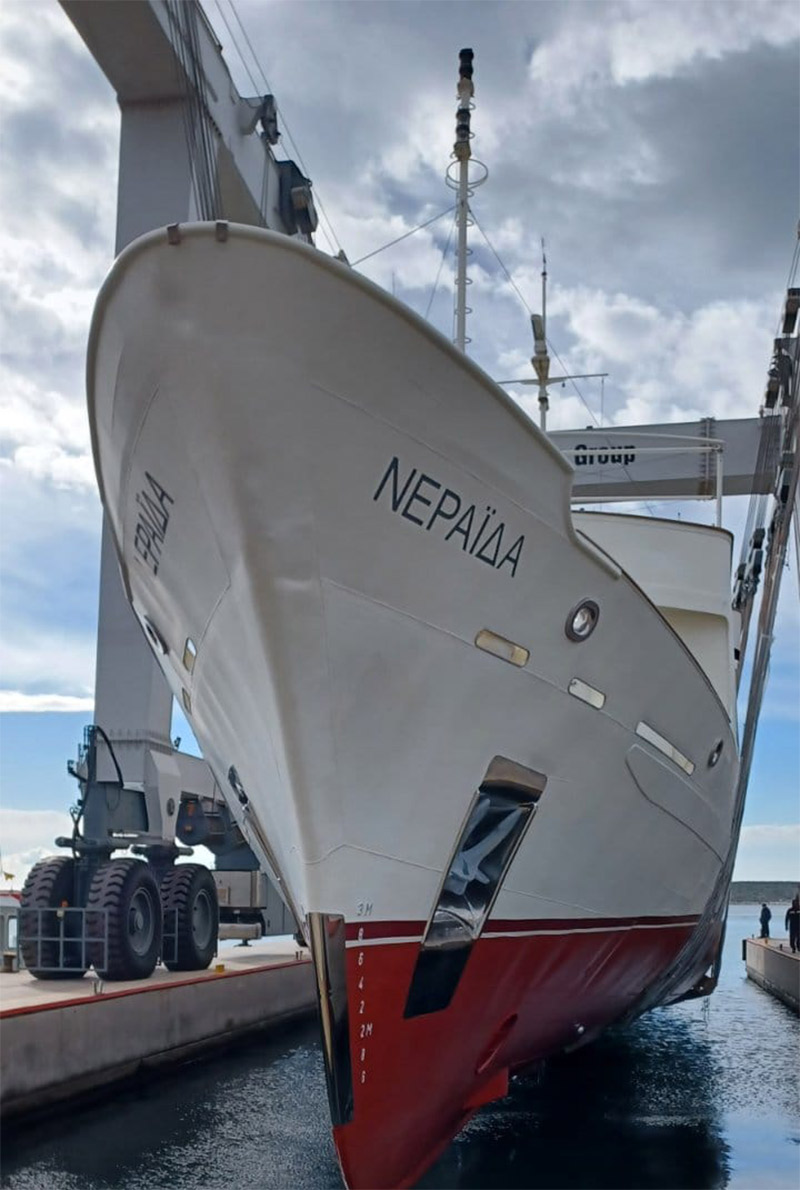On Board with History – The Neraida Floating Museum
The Neraida Floating Museum

The Vessel’s History
Some 85 years ago, Laurana’s bow proudly touched the waters of the Adriatic Sea and her voyage in history was launched. Laurana, a former passenger ferry, launched in 1939 in the, then Italian, city of Fiume, now modern-day Rijeka in Croatia, the Laurana had plied passenger routes across the Adriatic before being commissioned as a wartime hospital ship. She was blessed to survive the Second World War, despite being captured by the British Fleet. She was sold to a Maltese shipping company, that returned her to service as ferry connecting Malta to Syracuse Italy. Laurana was purchased by John S Latsis in 1949. The young shipping owner routed her on the Argosaronic Gulf line where she would gain her stardom as Neraida – a luxury passenger vessel and a set for Hollywood films.
Neraida’s Birth
Just a few days after her first voyage in the Argosaronic line in 1949, she was renamed Neraida – “fairy” in Greek – following an on-board vote in the presence of the future Greek Prime Minister, Nikolaos Plastiras, politicians and journalists. The boat was reborn and spent the next quarter of a century carrying passengers almost daily, hosting politicians and celebrities and appearing in Greek and foreign films. Her most frequent route was Piraeus-Aegina-Methana-Poros- Hydra-Hermioni-Spetses, but she also used to visit Leonidion, Monemvasia, Salamina, Nafplion and Epidaurus.


Neraida’s Deserved Retirement
Neraida finally retired in 1974 and remained laid-up until 2007 when an ambitious project was launched to assemble an archive of John S. Latsis’ life and work. In 2007, the decision was made to convert the vessel into a floating museum showcasing part of this collection. On 9 September of the same year, she was loaded on to the heavy cargo vessel Maria for the voyage to Sibenik in Croatia, where a three-year refit took place. Finally, in April 2010, the vessel returned under her own steam to Elefsis.
Rebirth as the Neraida Floating Museum
Today, the Neraida Floating Museum is a unique space that tells two central stories through numerous photographs, business, personal and public documents, scale models and audiovisual material. The ship’s two main corridors tell the story of the vessel from her launch in 1939 until her refit in 2010. The former passenger lounge serves as the main museum room and it’s here that the business history of Neraida’s Owner, the late John Latsis, from his birth in 1910 until the mid-1990s, unfolds. In the hall that once served as a dining room, visitors can see a short film introducing the exhibitions; the space can also be used for small-scale events and presentations.
Berthed at the Flisvos Marina, the Neraida Floating Museum remains open to visitors to enjoy the exhibition and workshop on Yacht Management by PrivatSea, alongside welcoming young children for interactive tours, freshmen students from universities and as a venue for organised events.
In early 2023, Neraida was brought into drydocking for maintenance work to ensure this beautiful vessel retains her structural integrity alongside her legendary design. She launched from the shipyard on 3 February 2023, with her bow retaining its classic shape, ready for new adventures.
As a piece of living history, Neraida tells the tale of 20th-century shipping in Greece, evoking the feel of an earlier age and celebrating the man who did so much to develop the industry.


For more information, visit www.neraida.org/en or discover more attractions to visit on your travels.
THE LEGACY OF JOHN S LATSIS
The Neraida Floating Museum is one of the projects funded by the John S Latsis Public Benefit Foundation. Established in 2005, the Foundation undertakes and supports initiatives in the fields of science, research, culture, Greek social welfare and community development to address crucial needs in Greek society.
MUSEUM CONTRIBUTORS
Vessel Reconstruction: NCP Shipyard, Sibenik, Croatia
Architect: Doug Patterson, Patterson Buxton, London, UK
Refit of Interior: Metrica Interior, Senden, Germany
Museologist/Curator: Dr Alexandra Bounia, Archaeologist-Museolologist Athens, Greece
Graphic Design: k2design, Athens, Greece


 Go back
Go back